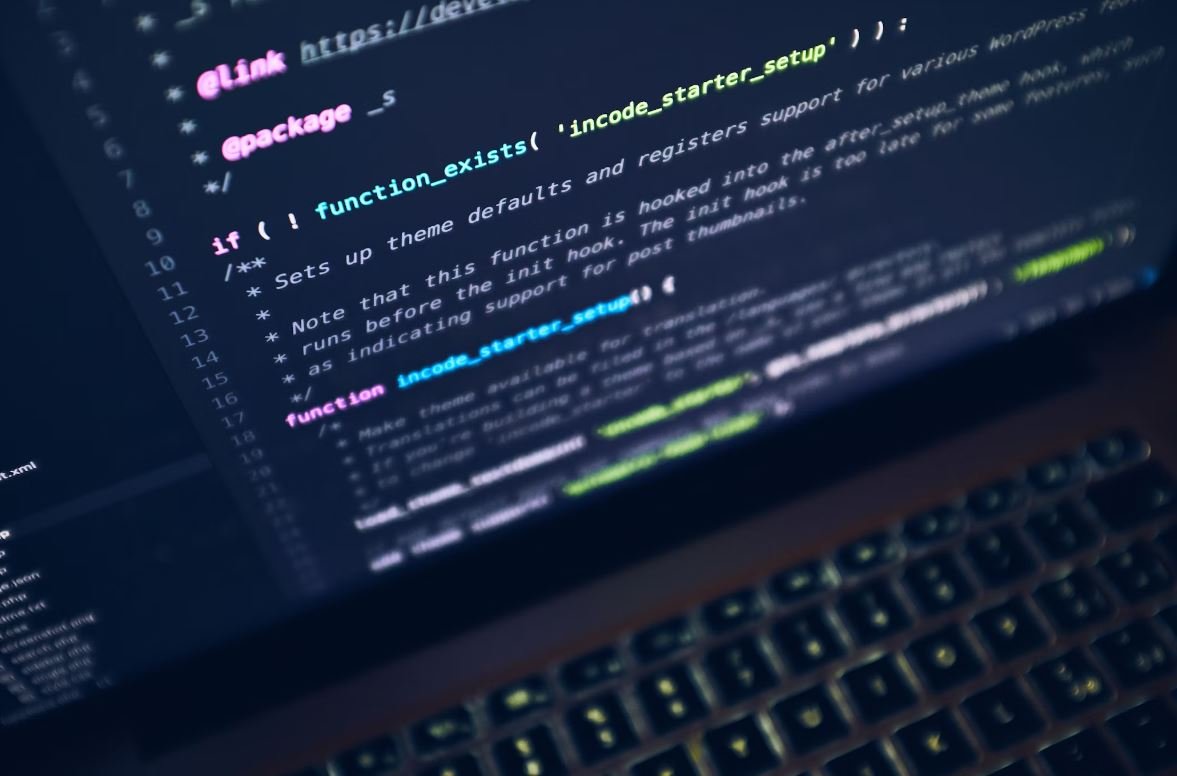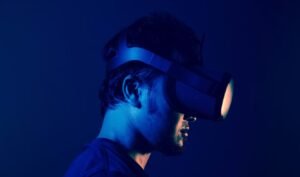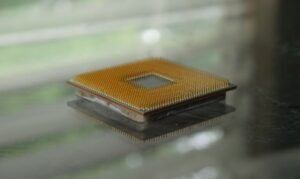Deepfake Kya Hota Hai?
Deepfake, ek siddhant hai jisme computers ke dvara banaye gaye videos ya images ka creation aur manipulation kiya jata hai, jo asal vyakti ya prani se bnaye gaye video ya taswiron se bilkul alag hote hain. Yeh technology machine learning, neural networks aur artificial intelligence (AI) ka istemal karti hai dikhawa kiya gya content banane ke liye. Deepfake ko pehli baar 2017 mein utpann kiya gaya tha, aur tab se yeh tezi se badh raha hai.
Key Takeaways:
- Deepfake technology ka upyog karke, computers dikhawa kiya gaya content, jaise video ya images, asal content se bilkul alag bana sakte hain.
- Yeh technology machine learning, neural networks aur artificial intelligence (AI) ka istemal karti hai.
- Deepfake videos aur images kisi bhi vyakti ya prani ke jeevan se judi ghatnayein dikhane ke liye bhi istemal ki ja sakti hai.
Deepfake ka istemal kuch log galat tarike se bhi kar sakte hain, jaise ki kisi vyakti ki image ya video ko manipulate karke unki asal pehchan chhupana. Is technology ke baare mein logon ki jagrukta badhane ke liye, is article mein hum deepfake ke baare mein vistar se jaante hain.
Deepfake Kaise Banate Hain?
Deepfake banane ke liye, ek machine learning technique istemal kiya jata hai, jo dikhawa kiya gaya content banane ke liye video ya images ki millions se bhi zyada frames ka istemal karti hai. Ek deepfake algorithm ko pehle training diya jaata hai, jahan par usko asal aur dikhawa kiya gaya content diya jata hai. Phir, is algorithm ko istemal karke wo asal content se alag dikhane wale frames ko create karne ke liye generate kiya jata hai.
Deepfake Ki Shohrat
- 2017 mein deepfake ki shuruat ho gayi, jab yeh technology sabse pehle banayi gai thi.
- Deepfake technology ne social media platforms aur internet par kuch viral videos aur images ke roop mein apna pradarshan kiya hai.
- Kai celebrities, politicians aur dusre prasiddh vyaktiyon ke deepfake videos internet par viral hue hai.
Deepfake Ke Prati Chunautiyan
Deepfake videos aur images ke prasantikaran par charcha badh rahi hai, aur iski wajah se kuch mukhaye chunautiyan uth rahi hain:
- Social media platforms aur video sharing sites deepfake content ko rokne aur hatane ke liye proactive approach apna rahe hain.
- Legal systems aur law enforcement agencies deepfake ko identify, trace, aur prosecute karne mein chunautiyan ka samna kar rahe hain.
- General public ko deepfake se judi jagrukta badhane ki zaroorat hai, taki log deepfake se samaj par hone wali asar ko pehchan sakte hain.
Deepfake Ki Jankari
Yahan di gayi tables mein aap deepfake se judi kuch zaroori jankariyan aur data points dekh sakte hain:
| Year | Milestone |
|---|---|
| 2017 | Deepfake technology ke pehle version ka utpann |
| 2020 | Pornography me deepfake ki wide-spread upyog |
| 2021 | Deepfake detection technology ka vikas |
| No. | Prominent Deepfake Examples |
|---|---|
| 1 | Deepfake videos of world leaders |
| 2 | Deepfake pornographic content |
| 3 | Deepfake videos for entertainment purposes |
Deepfake Detection
Deepfake videos aur images ko identify karna challenging ho sakta hai, lekin technology ke madhyam se kuch detection options bhi hain:
- Forensic analysis aur deep learning techniques deepfake content ko identify kar sakte hain.
- Public aur private organizations deepfake detection algorithms develop kar rahe hain, jisse asal aur fake content ko alag kiya ja sake.
- Blockchain technology bhi deepfake detection mein madad kar sakti hai, kyunki isse content ki authenticity aur tampering ko track kiya ja sakta hai.
Deepfake Ke Acche Aur Bure Prayog
Deepfake ke acche prayog mein, iski madad se entertainment industry aur special effects mein kaam karte hain. Aise prayog images aur videos ko sabse asal tarah se dikhane aur realist banaane mein kiye jaate hain.
Deepfake ke bure prayog mein, kuch log image aur video ko manipulate karke mazak banate hain, ya phir kisi vyakti ki asal pehchan chhupate hain. Aise cases mein deepfake technology ka galat istemal kiya jata hai.
Conclusion:
Deepfake technology ke istemal se judi jagrukta aur nigrani karna zaroori hai. Is technology ke sahi aur zimmedar istemal se udyog, entertainment aur samaj ko fayda mil sakta hai, lekin beyaj aur galat istemal se nuksan bhi ho sakta hai. Deepfake detection technology ke vikas ke saath-saath, legal pravdhan aur public awareness par dhyaan dena zaroori hai.

Common Misconceptions
Misconception 1: Deepfake is only used for creating fake videos
One common misconception about deepfake technology is that it is only used for creating fake videos. While deepfake is indeed popularly used for manipulating videos, it can also be used for other purposes such as creating fake audio, images, and even text. Deepfake technology is capable of generating convincing synthetic media in various formats.
- Deepfake technology can be used to create fake audio recordings that could mimic someone’s voice perfectly.
- It can be used to generate fake images, making it challenging to distinguish between real and fabricated photos.
- Deepfake algorithms can also generate realistic fake text, which could be used to spread misinformation or manipulate public opinion.
Misconception 2: All deepfakes are easily detectable
Another common misconception is that all deepfakes are easily detectable. While some deepfakes may have noticeable flaws, such as unrealistic facial movements or inconsistent audio syncing, the technology is rapidly advancing, making it increasingly difficult to detect deepfakes accurately.
- Deepfake creators are continually improving their techniques, making the generated content more realistic and harder to identify.
- Deepfakes can be blended with real footage, making it challenging to distinguish the manipulated parts.
- Sophisticated deepfake algorithms can take into account specific lighting conditions, camera angles, and other factors to create highly convincing fakes.
Misconception 3: Deepfake is primarily used for harmful and malicious purposes
There is a misconception that deepfake technology is primarily used for harmful and malicious purposes. While deepfakes have indeed been used for creating fake celebrity pornographic videos or spreading misinformation, it is essential to note that deepfake technology itself is neutral and can be used for various other purposes.
- Deepfake technology has positive applications such as in the entertainment industry or for enhancing visual effects in movies.
- Researchers are using deepfakes to develop tools for facial expression analysis and emotion recognition.
- Deepfake technology can be used for prototyping and simulations, enabling faster and more cost-effective product development.
Misconception 4: Deepfake can only be made by experts
Many people believe that creating deepfakes requires extensive technical expertise and knowledge of machine learning. While deepfake creation indeed requires some level of technical skill, there are now user-friendly tools and software available that make it more accessible to a broader audience.
- Several online platforms provide easy-to-use interfaces for creating deepfakes without in-depth technical know-how.
- Tutorials and guides are available online that simplify the process of creating deepfakes for beginners.
- Advanced deepfake algorithms can generate convincing results with minimal user input, reducing the need for expert knowledge.
Misconception 5: Deepfake is a recent phenomenon
While deepfake technology has gained widespread attention in recent years, it is not a recent phenomenon. The concept and techniques behind deepfake have been around for several years, with the technology continuously evolving and becoming more sophisticated over time.
- Deepfake technology has its roots in academic research on computer vision and machine learning, dating back to the early 2000s.
- Early deepfake techniques focused on face swapping and were primarily used in the entertainment industry.
- The term “deepfake” itself was coined in 2017 when a Reddit user shared explicit videos featuring celebrities’ faces swapped onto adult film actors.

The Rise of Deepfake Technology
In recent years, the emergence of deepfake technology has raised concerns worldwide. Deepfakes are realistic-looking videos, images, or audios that have been manipulated or synthesized using artificial intelligence. They have the potential to deceive and manipulate, posing serious threats to individuals and society. Here are some fascinating facts and statistics about the world of deepfakes:
The Impact of Deepfakes on Politics
Deepfakes have increasingly become a concern in the realm of politics, as they can be used to spread disinformation and manipulate public perception. Here are some noteworthy instances:
The Entertainment Industry and Deepfakes
The entertainment industry has witnessed the use of deepfakes for various purposes, including impersonating actors, altering scenes, and creating unique experiences. Here are some intriguing examples:
Deepfakes in Social Media and Cybersecurity
The spread of deepfake technology has also posed significant challenges in the realms of social media and cybersecurity. Here are some thought-provoking insights:
The Legal Implications of Deepfakes
The rise of deepfake technology has presented complex legal challenges and implications. Here are some key aspects to consider:
Deepfakes in Journalism and Media
As deepfake technology advances, the potential impact on journalism and media cannot be overlooked. Here are some noteworthy instances:
Protection Techniques Against Deepfakes
In the ongoing battle against the misuse of deepfake technology, various defense mechanisms and protective measures have been developed. Here are some effective techniques:
Deepfake Detection and Identification
The ability to detect and identify deepfakes is crucial in combating their harmful effects. Here are some notable techniques for deepfake detection:
The Growing Threat of Deepfake Pornography
One of the darkest aspects of deepfake technology is its role in the creation and distribution of non-consensual pornography. Here are some unnerving statistics:
Future Outlook: The Evolution of Deepfake Technology
As deepfake technology continues to evolve, its potential impact and consequences are a subject of intense debate. Here are some speculations and predictions for the future:
Deepfake technology has rapidly progressed, raising concerns over its malicious applications. The potential to deceive and manipulate through realistic-looking videos, images, and audios poses substantial threats to society. While detection methods and protective measures have been developed, the battle against deepfakes continues. Stricter regulations, public awareness, and ongoing research will play crucial roles in safeguarding the integrity of media and protecting individuals from the detrimental effects of deepfake technology.
Frequently Asked Questions
Deepfake Kya Hota Hai?
What is a deepfake?
How does deepfake technology work?
What are the potential risks of deepfake technology?
How can deepfakes be detected?
What are some potential real-world applications of deepfake technology?
Are there any legal consequences for creating or sharing deepfakes?
Can deepfake detection tools keep up with advancing technology?
Are there any preventative measures against deepfake technology?
What role does education play in combating deepfake technology?
Is it possible to completely eliminate the use of deepfake technology?




